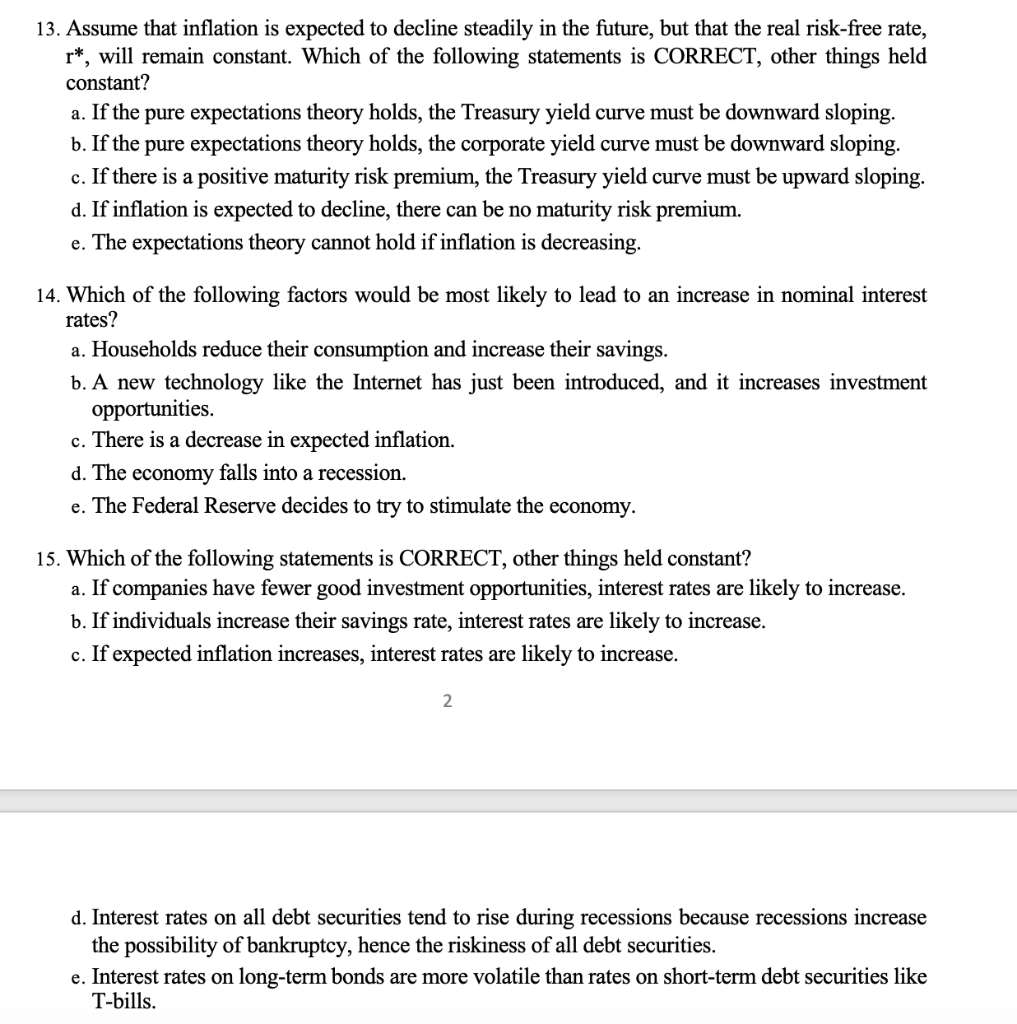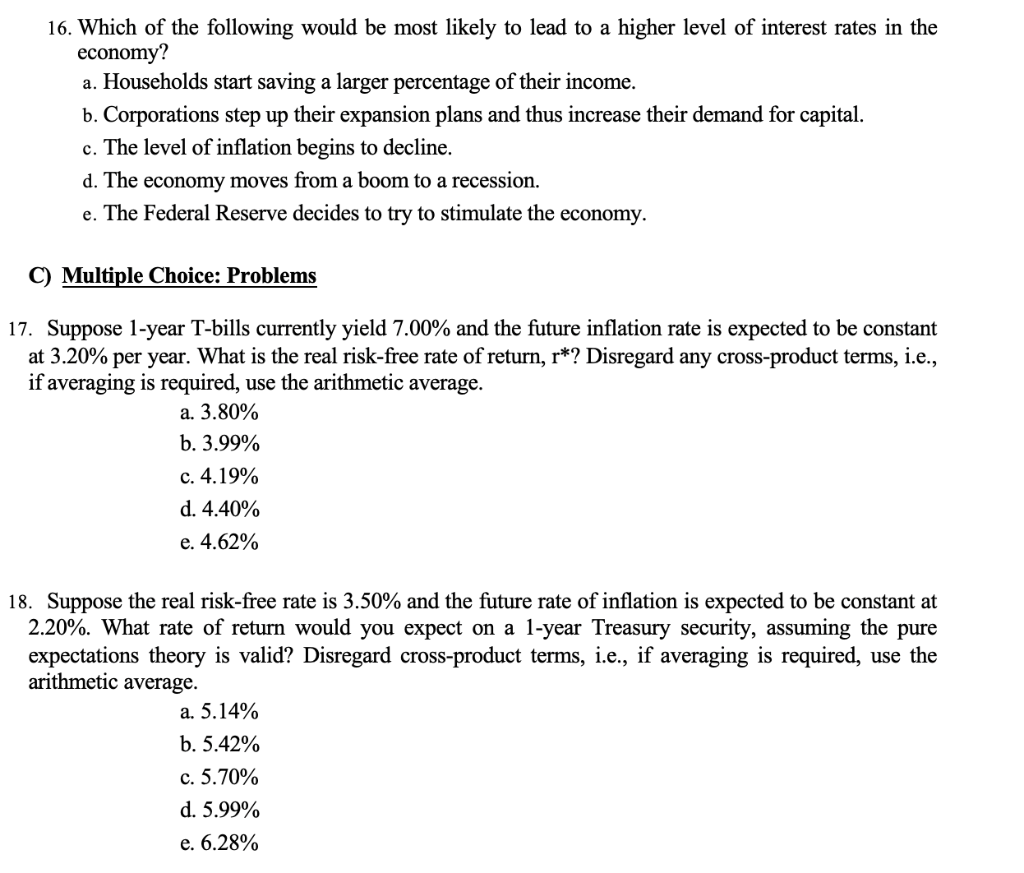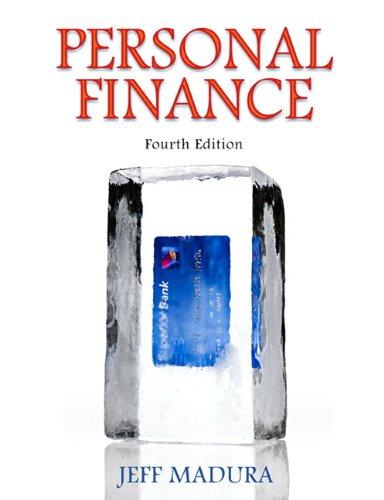Answered step by step
Verified Expert Solution
Question
1 Approved Answer
I need answers ASAP, direct thumbs up promise 13. Assume that inflation is expected to decline steadily in the future, but that the real risk-free


I need answers ASAP, direct thumbs up promise
13. Assume that inflation is expected to decline steadily in the future, but that the real risk-free rate, r*, will remain constant. Which of the following statements is CORRECT, other things held constant? a. If the pure expectations theory holds, the Treasury yield curve must be downward sloping. b. If the pure expectations theory holds, the corporate yield curve must be downward sloping. c. If there is a positive maturity risk premium, the Treasury yield curve must be upward sloping. d. If inflation is expected to decline, there can be no maturity risk premium. e. The expectations theory cannot hold if inflation is decreasing. 14. Which of the following factors would be most likely to lead to an increase in nominal interest rates? a. Households reduce their consumption and increase their savings. b. A new technology like the Internet has just been introduced, and it increases investment opportunities. c. There is a decrease in expected inflation. d. The economy falls into a recession. e. The Federal Reserve decides to try to stimulate the economy. 15. Which of the following statements is CORRECT, other things held constant? a. If companies have fewer good investment opportunities, interest rates are likely to increase. b. If individuals increase their savings rate, interest rates are likely to increase. c. If expected inflation increases, interest rates are likely to increase. 2 d. Interest rates on all debt securities tend rise during recessions because recessions increase the possibility of bankruptcy, hence the riskiness of all debt securities. e. Interest rates on long-term bonds are more volatile than rates on short-term debt securities like T-bills. 16. Which of the following would be most likely to lead to a higher level of interest rates in the economy? a. Households start saving a larger percentage of their income. b. Corporations step up their expansion plans and thus increase their demand for capital. c. The level of inflation begins to decline. d. The economy moves from a boom to a recession. e. The Federal Reserve decides to try to stimulate the economy. C Multiple Choice: Problems 17. Suppose 1-year T-bills currently yield 7.00% and the future inflation rate is expected to be constant at 3.20% per year. What is the real risk-free rate of return, r*? Disregard any cross-product terms, i.e., if averaging is required, use the arithmetic average. a. 3.80% b. 3.99% c. 4.19% d. 4.40% e. 4.62% 18. Suppose the real risk-free rate is 3.50% and the future rate of inflation is expected to be constant at 2.20%. What rate of return would you expect on a 1-year Treasury security, assuming the pure expectations theory is valid? Disregard cross-product terms, i.e., if averaging is required, use the arithmetic average. a. 5.14% b. 5.42% c. 5.70% d. 5.99% e. 6.28%Step by Step Solution
There are 3 Steps involved in it
Step: 1

Get Instant Access to Expert-Tailored Solutions
See step-by-step solutions with expert insights and AI powered tools for academic success
Step: 2

Step: 3

Ace Your Homework with AI
Get the answers you need in no time with our AI-driven, step-by-step assistance
Get Started


